As there continues to be a steady progression of technology in long-range shooting, some things never really go out of style, like the rifle data book. I know a lot of people would consider them antiquated and unnecessary in today’s world of accurate ballistic solvers. However, there’s still a very real need to be able to record hard copy data from actually putting rounds down range, which can’t be readily augmented by technology.
Recently I determined that a few of my rifles could benefit from having a data book but I couldn’t really justify the cost for a full modular data book like I had for some of my other rifles. I looked for a simple solution that had a structured format for recording data but didn’t break the bank either. I ended up finding a couple of options, one from Rite In The Rain and another from Storm Tactical, so I did the logical thing and bought both of them to check out.
Rite In The Rain DOPE Logbook
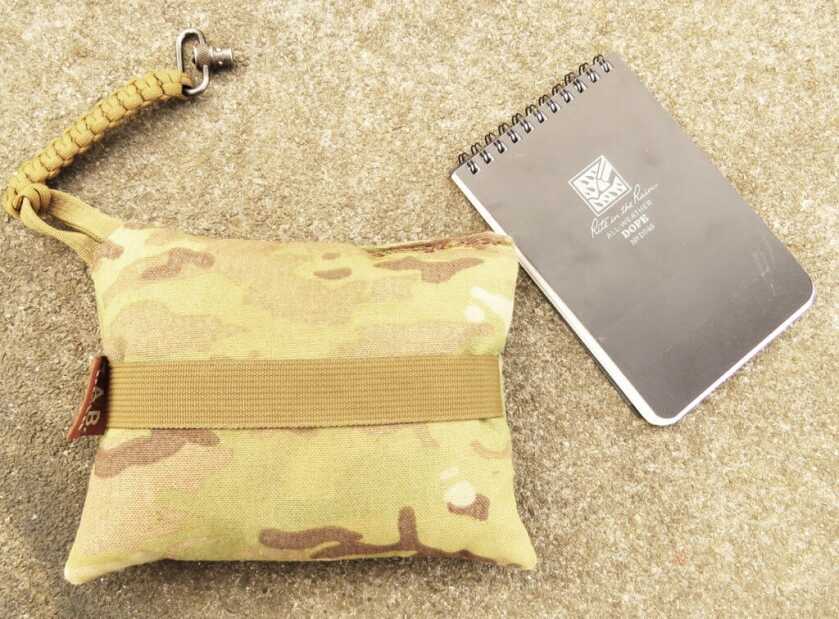
The DOPE (Data On Previous Engagements) logbook is a new offering from Rite In The Rain but they are no strangers to the databook game. For decades they’ve provided the waterproof paper that went into many of the commercial data books out on the market. This is their first in house data book though and I think they’ve done a great job with it. The Rite In The Rain logbook is a simple 4” X 6” notepad with a layout that’s useful and intuitive for collecting ballistic data. The thick plastic front and back covers have reference information on the inside that pertains to wind, range estimation, and conversion charts. Also on the inside covers are rulers for measuring group sizes in MOA and Mil at distances in both yards and meters, they are NOT inch and cm rulers. There are four tables on the first couple of pages with 52 rows in total to help you log your round counts. All of the other pages are “logbook” pages with an alternating array of shot data pages and blank “Universal” pattern sheets.

This logbook was destined for my Ruger 10/22 that I use for precision rimfire matches, which happened to show up just in time for the rimfire finale. My first excursion with the DOPE logbook was to the range so I could check my zero and confirm my drops to 300 yards. The sheets for recording shot data had the obligatory boxes for entering the date, location, and atmospheric info, which took up about a quarter of the page. The rest had four tables, each one with a box to write in the range, elevation, and wind hold, as well as some short notes. The backside of each shot data page was RITR’s “Universal” pattern, which has ¼” spaced solid horizontal lines with dashed vertical lines spaced ¼” to make a sort of grid system. What I liked about this layout was that it allowed me to easily draw in my own targets, enter any additional notes that I wanted, and leave out the info I didn’t need.

The logbook was very useful at the range but it was also handy at the match to help log and track data from individual stages for review later. It helped me note some trends on the longer-range stages, record actual field dope at various ranges, and how certain shooting positions worked out for me. I completely filled out the front and back with little effort and based on the information I gathered I was able to create an accurate data chart from 50 to 318 yards.
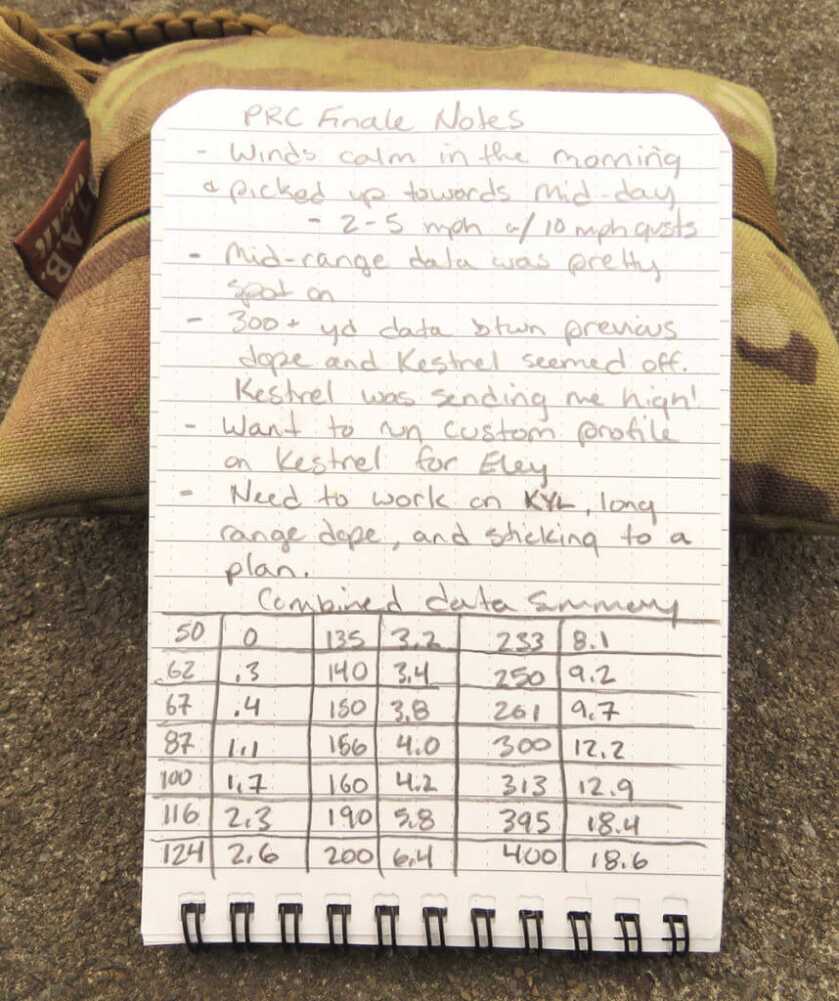

To me, the RITR DOPE logbook is the perfect companion for my Ruger 10/22 and I have no doubt that I’ll be picking up another one or two. The utility of this little logbook can’t be underestimated and it’d be the perfect logbook for hunting and long-range rifles alike. The best part might be the price, just $8.95 plus shipping.
For more information check out Rite In The Rain.
Storm Tactical Pocket Data Book (Rimfire Edition)
Storm Tactical has also been in the databook business for a long time but just recently I saw that they also make a rimfire version of their pocket data book. The pocket version is very compact at about 3” X 5” and approximately 1” thick with heavy-duty paper inside. Although for an upcharge you can get it with waterproof Rite In The Rain paper. Now, this data book was developed with the NRL22 circuit in mind so the contents are formatted with those matches in mind. That’s not to say this databook is useless if you’re not shooting NRL22 matches, the targets they use are generic enough that it’s easy to adapt it to other competitions and target types.
To be perfectly honest, when I first cracked the book open I seriously thought it wasn’t going to work out for me. The layout seemed a little weird compared to how most data books are and the number of pages for a given format just seemed off. Normally, reference pages are up front, pages for logging shots are in the middle, and the back has the round count log and/or note pages. The Storm Tactical data book splits that up so that there is some reference information up front but a lot of it is in the back.
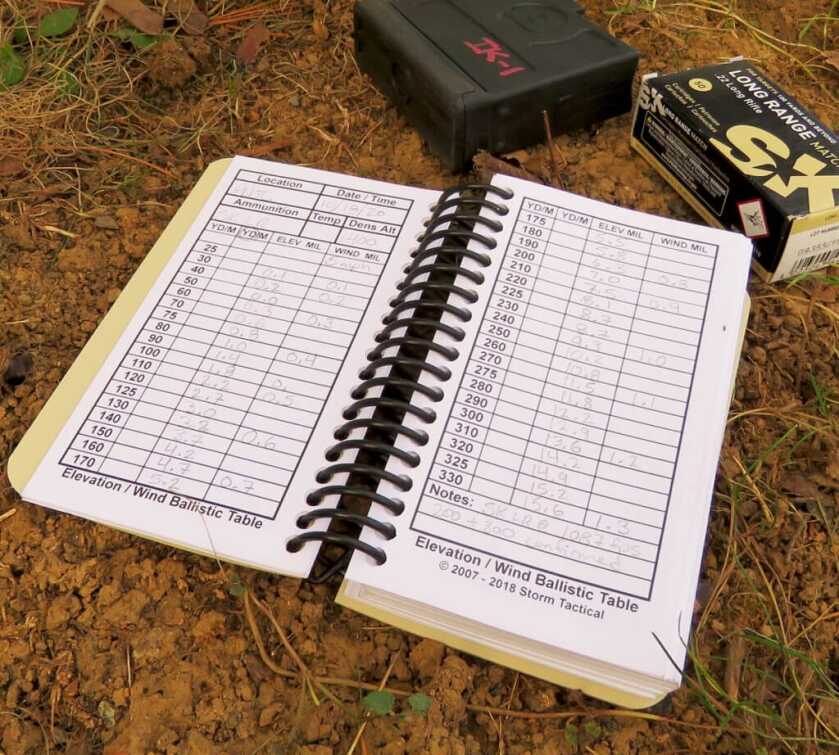
The layout for the data book is like this:
- Cold Bore Data Pages
- Blank Data Chart Pages
- Reticle Hold Over Pages
- 1.5”, 2”, and 3” Bullseye Pages
- IPSC Target Pages
- Reference and Note Pages
The more I used the databook though the more I started to understand the method behind the madness. The reference material in the back is in reality the information that may only get used a handful of times so I understand its placement in the stack. What is weird is that the blank note pages are interspersed in the back between the reference pages instead of being altogether. If I need to take more than a couple of pages of notes they’ll be broken up by pages ranging in meters or angle shooting.
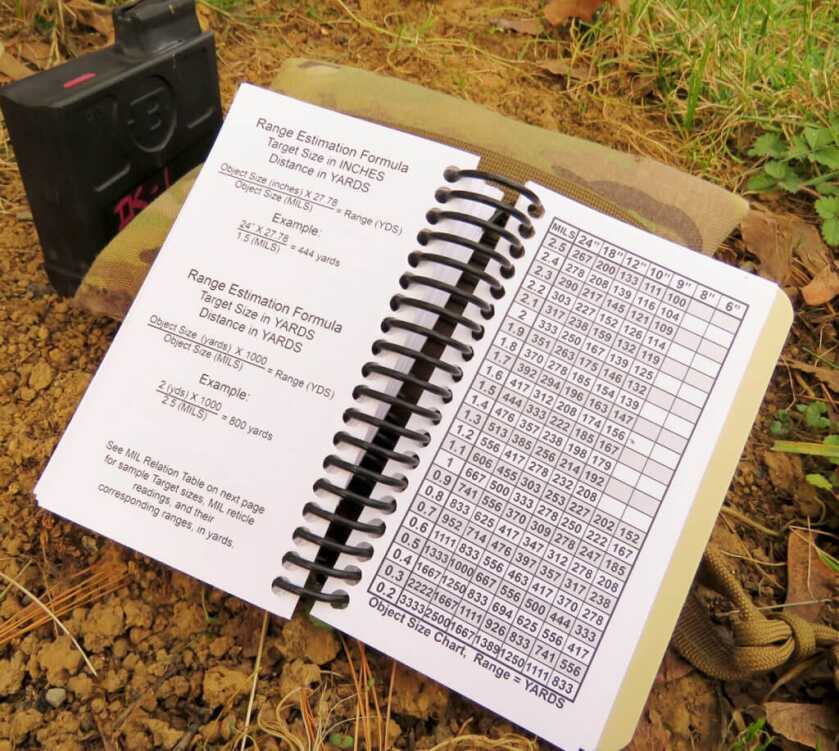
Diving into the meat and potatoes of the data book though, there are about 29 pages of blank data charts that can be filled in with elevation and wind data from 25-330 yards. At first, that seemed like it was excessive until I considered that with .22 ammo, there are likely to be POI shifts based on temperature and density altitude. Multiply that by a few different kinds of ammunition that might get used and suddenly 29 pages might not be enough. I was using this data book for my Bergara B14R, which gets used with a variety of types of ammunition so having an abundant amount of pages was welcome.
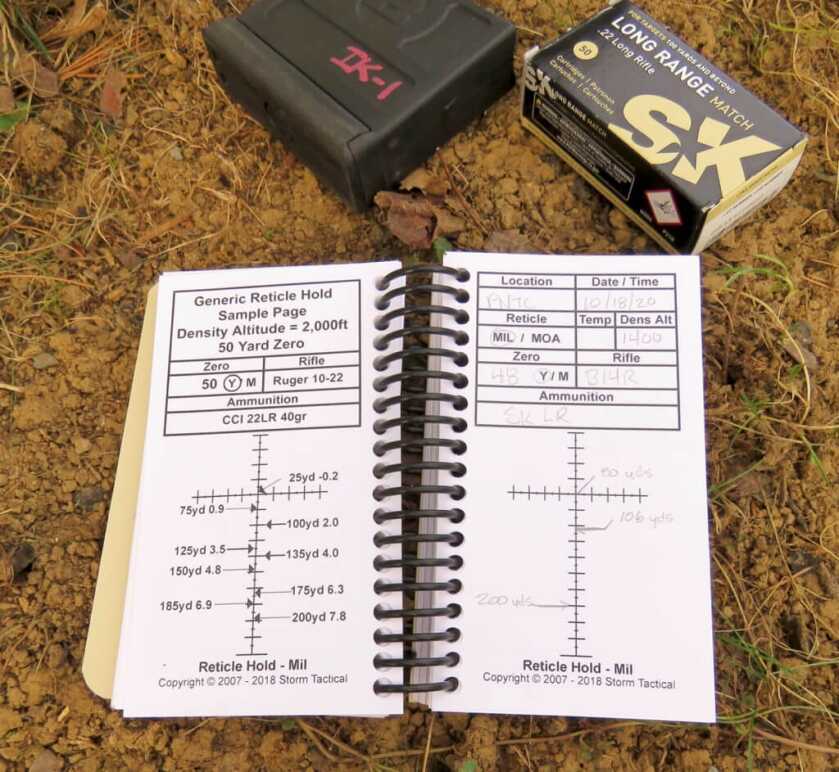
The middle of the data book is mostly target data pages for 1.5”, 2”, 3” bullseyes with some torso targets bringing up the rear. The bullseye targets from the databook are based on those used in the NRL22 series and can be downloaded from their website or adapted to other, similar bullseye targets. Each section has a place to write down the usual target data like location, date, ammunition, and atmospheric data. The opposite page is for recording the elevation and wind settings, as well as the call box for where the shot broke. The only thing the pages lack is a lot of room to add additional notes that might be pertinent to that shooting session.
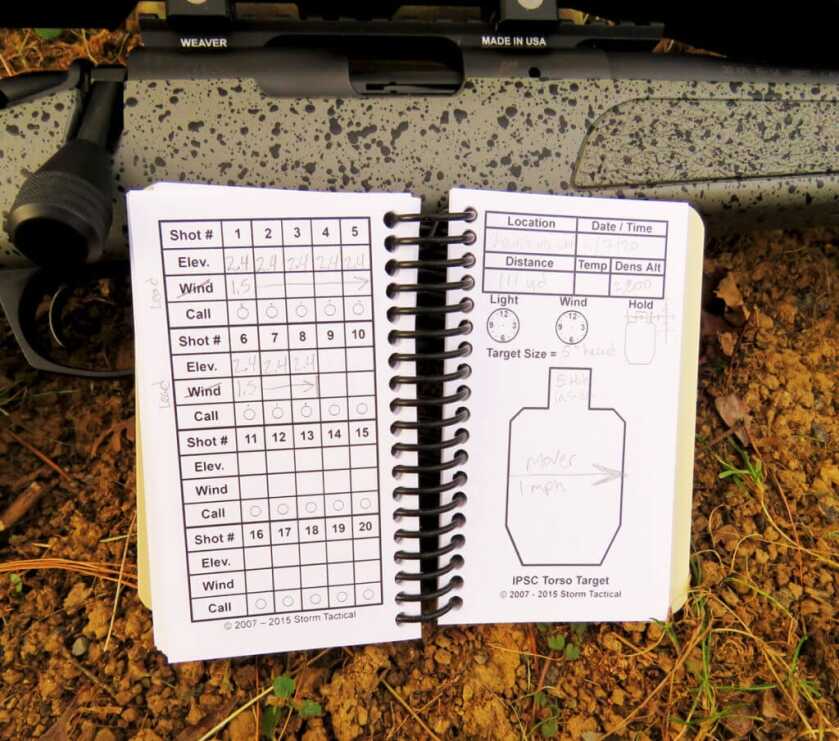
I didn’t log as much info into this databook at a NRL22X match that I attended as I did with my 10/22 but it still proved useful. I had formulated a basic drop chart beforehand and was able to true it up based on my actual elevation settings during some of the stages. Moving targets were also something that I had no data for but after one stage I had reliable dope to use down the road. During a recent range trip, I used the databook some more to log my shots when shooting with a rifle sling as I was a bit rusty. With those shots and calls logged I’ll be able to track my progress the next time I go out and better focus my efforts to improve my marksmanship abilities.
Despite its quirks, the pocket rimfire databook from Storm Tactical is about as full-featured and useful of a data book that you’ll find for this application without going to a full size set up. Now, if you don’t want the rimfire version, they also make a standard version with a different format more conducive to centerfire rifles. Either version of the pocket data book is $19.99, so a pretty good bargain.
For more information visit Storm Tactical.
Closing Thoughts
Years ago I mused that an analog ballistic solver could make data books irrelevant and again when I reviewed the Kestrel 5700 Elite I had similar thoughts. That was all just wishful thinking because those products only work in the moment, they aren’t foolproof, nor are they always correct. Memories get hazy and things get misremembered but if you write it down there won’t be any guesswork about the elevation setting, the wind hold, or how far away the target was. I highly recommend a data book for any rifle and for less than $20 for either of the above options there’s little excuse not to get one.

Excellent book review. I have these Storm Pocket Books in rimfire and center fire editions, and find them very useful.